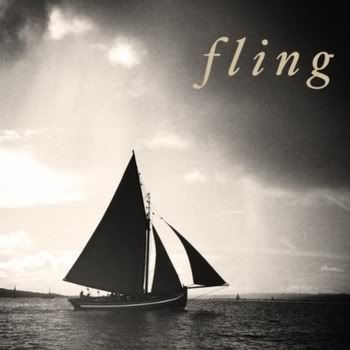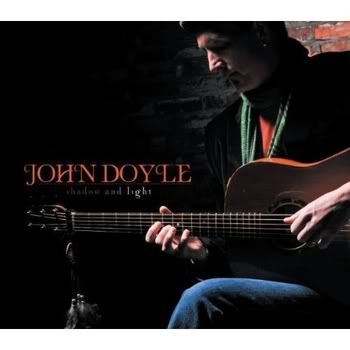
Sometimes a post tells me how it wants to be written. My last post, about Stanley Greenthal, was absolutely intended to lead into this one. Here then is a feature about music from the British Isles, with four examples with roots in Ireland, and one from England. But, as I was putting all of this together, I was struck by how three of the album covers, including the Greenthal, feature water imagery. And then I realized that none of this music is purely traditional. All of it has roots in tradition, but some of it crossed the sea, while some stayed home and had musical influences come to it across the water. So, even though some of the artists here live and work inland, this is music that lives on the shore, and grows and is nourished by what comes in with the tide.

Beannacht: Lovin‘ Ain‘t Ever Wrong
[purchase]
Only one band name and album title in this post are in Irish Gaelic. Beannacht means “blessing”, and they hail from County Hunterdon. Now maybe you are an expert on Irish geography, and you are surprised you have never heard of it. That’s because County Hunterdon is in New Jersey. The music of Beannacht combines an Irish lilt in the background with American folk music closer to the surface. In the remarkable case of Love Ain’t Ever Wrong, the result is an Irish blues song, and it works. The most noticeable Irish part of this music is the vocal approach of Deardre Forrest. The Irish are rightly famed especially for the beauty of their female voices, and Forrest’s is no exception. The other half of Beannacht is Forrest’s uncle, Tom Johnston. He also sings, and provides a solid rhythm on guitar at all times. Johnston wrote almost all of the music here. Both members of the group write lyrics, with Forrest being the stronger lyricist at the moment. But Beannacht is a new act, and they are only going to get better. That is certainly something to look forward to.

Queen Elvis: Round and Round
[purchase]
So, now let’s actually go to Ireland. There we meet Queen Elvis, a group that takes its name from a song by Englishman Robin Hitchcock. Hitchcock tends to ignore the rules in his songwriting, and so it is here as well. Round and Round is a waltz, featuring acoustic guitar and cello. The cello is plucked at first, making an almost percussive sound. Then we hear the amazing voice of Caroline Stanley. She sings powerfully in a low alto, with smoky tones. The only clear influence here of traditional Irish music comes in some of the bowed lines in the cello. Over all, Round and Round is a song of war, given a stern beauty by this performance. Little World is the only release so far from Queen Elvis, and it is just a three-song EP. I haven’t heard, but I hope there is a full length album in the future.

Fling: Ballyshannon Bends
[purchase]
I had reported about Fling’s debut, also an EP. That one has become impossible to find, but no matter; All of the songs on it and much more are here on their debut album. The EP was all instrumentals, but there also three songs here with vocals. Curiously, those are all American songs, and they are performed that way, although with a slight Irish accent. But the instrumentals take inspiration from everywhere. Yes, there are a number of traditional Irish airs and dances here, but some tunes remind me of the folk-punk of the Pogues. And then there is Ballyshannon Bends. This one might have been at home on the Stanley Greenthal album; it sounds to me at first like it could have come from Greece. But the song is named for a road with perilous curves, located in County Donegal, and it speeds into folk punk territory by the end. It is performed, like everything on this album, with the irresistible combination of fine musicianship and high energy.

John Doyle: Selkie
[purchase]
John Doyle may be the musician in this post who is most steeped in traditional Irish music. Even though the songs on Shadow and Light are all originals, they show a strong love of Irish storytelling. But Shadow and Light was recorded in Nashville. On Selkie, Doyle plays electric guitar, the other instruments are lap steel and stand up bass. The bass player is Todd Phillips, who I know best for his jazzy playing with David Grisman. Elsewhere on the album, more traditional instruments are heard, like fiddle, banjo, mandolin, and concertina. Doyle plays acoustic guitar and sometimes bouzouki. But even there, the fiddler is Stuart Duncan, who I first heard playing western swing. So there is no doubt from the sound that Shadow and Light is the work of an Irish musician, but Doyle finds common ground with other traditions throughout, and the result is an album of rare beauty.

Anthea Neads & Andy Prince: River of Lights
[purchase]
Anthea Neads sings in a beautiful English folk soprano. She has a light tone, but the emotion of each song comes through wonderfully. Her musical partner here is bass player Andy Prince. Usually, a bass is heard in the background, as a supporting instrument. Not here. Prince is a melodic player, and the tone he gets from his instrument makes it a second voice, intertwining with Neads to make a greater whole. There are other instruments here, mostly for color, but Neads and Prince are the stars. English folk and folk-rock are the foundations here, but Neads and Prince are unafraid to go adventuring from there, and the results are well worth it.






1 comments:
Hello from Ireland
and thanks for the review
Caroline
Post a Comment